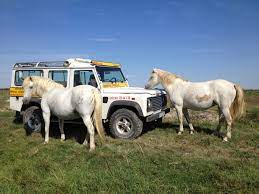The safari Camargue area in the southern part of France hosts a unusual herd of crazy horses. The horses are a protected species and roam freely in the community. Just recently, the horses happen to be safari camargue seen roaming the roadways of near by cities and villages.
Some people have reported concerning the horses causing traffic jams and damage to home. Other people discover them an annoyance. However, many natives say they may be excited to discover the wild animals in their town.
Photographs in the Camargue Horses:
The Camargue horse is a gorgeous animal having a very long mane and tail. The horses are primarily bright white, however some have black or brown markings. They can be large and muscle and will get to rates as much as 40 mph.
The Camargue region in southern France is actually a unique place exactly where humans and wildlife are living. The location houses many parrot varieties, flamingos, bulls, and naturally, the Camargue horses.
Exactly Why Are the Camargue Horses Extremely Important?
The Camargue place of the southern part of France is home to an excellent herd of wilderness horses, referred to as the Camargue horses! Sadly, the Camargue horses are uncommon and vulnerable. There are approximately 200 horses remaining around. That’s why it’s so essential to shield them!
The Camargue horses can be really unique critters. These are only horses on earth which can be delivered with white layers. Their coats turn a lovely hue of grey or black colored while they age group. The Camargue horses are also renowned for their hardy the outdoors. They can survive in issues that would destroy other horse dog breeds.
The Camargue horses are extremely significant since they signify an integral part of French culture and history that may be slowly disappearing. They are roaming the streets of France for years and years and so are a prompt of your easier time. We should do everything we can to guard them!
Verdict:
The Camargue horses can be a wonderful and rare breed of horse indigenous to the Camargue place of the southern part of France. These horses are considered one of the most endangered horse types on the planet, with no more than 200 kept around.
